Mazda has revealed the pricing and specifications of its all-electric MX-30, confirming that the new model will be available from a competitive £25,545.
That headline price is for the base MX-30 SE-L Lux and includes the £3000 government grant. It features 18in alloys, LED headlights, a head-up display with traffic sign assistance, radar cruise control, an 8.8in touchscreen display with sat-nav, Apple CarPlay and Android Auto mirroring, and a separate 7.0in climate touchscreen as standard.
Further kit includes a host of driver assistance tech such as rear cross traffic alert and emergency lane keeping with blind-spot assistance. All MX-30s come with a Type 2 AC charging cable and a socket for 50kW rapid charging.
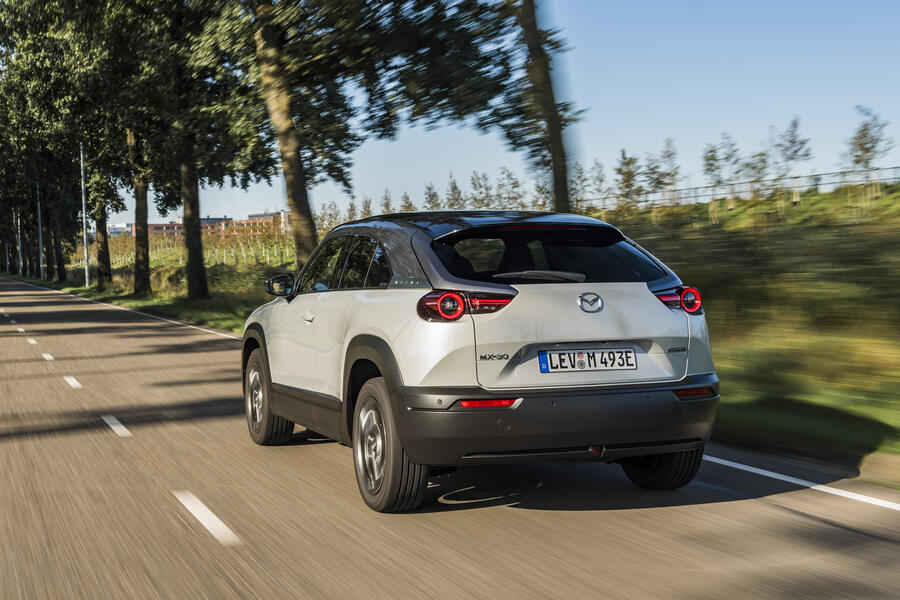
Stepping up to First Edition, which is the only model currently available to pre-order, adds new colour options, adaptive LED headlights, different LED rear lights, an orange-and-stone leatherette interior and eight-way adjustable and heated front seats. Just 500 First Editions will come to the UK in the first wave of deliveries.
For just £50 more (presumably to fill the gap once the First Edition sells out), the £27,545 Sport Lux gets electric seats and the option of more colours, including a three-tone design combining three body colours.
Range-topping GT Sport Tech brings a power and tilt sunroof, a heated wheel, a 12-speaker Bose surround sound system and a 360deg rear-view camera. Customers can reserve a car for £800 for delivery, estimated to be before the first quarter of 2021 ends.
The MX-30 will shake up the EV market when it arrives, shunning typical characteristics, such as silent motoring and one-pedal driving, that are found in EVs.
Mazda said the car has been developed for drivers who “don’t want to sacrifice driving pleasure” when buying an electric car.
The maker's first electric model will deliver 141bhp and 195lb ft from an electric motor powered by a 35.5kWh battery, offering a range of 130 miles. This is far less than many rivals, such as the 279-mile Hyundai Kona Electric, but Mazda says it exceeds the 31-mile average daily drive of European customers.
Mazda added that it has chosen a smaller battery to achieve better emissions through the entire life cycle of the car. Its research has found that a 35.5kWh battery produces fewer life-cycle emissions overall than a petrol-powered Mazda 3 or an EV using a 95kWh battery (as the Audi E-tron) does.
Christian Schultze, Mazda Europe's R&D boss, said: “We should not be excessive with battery size. We should consider how much range does a customer really need and how much battery [capacity] can we avoid to reduce CO2 substantially.”

There are no plans for a higher-powered or higher-range flagship MX-30, project manager Tomiko Takeuchi told Autocar.
Mazda has chosen to differentiate the MX-30 from other EVs in a number of driving characteristics. For example, it has less regenerative breaking than many EVs - eschewing the popular one-pedal driving style - and also more progressive acceleration.
Schultze says: “For strong deceleration, we think the brake is better because it moves in the direction of our body. It has the same efficiency as the one-pedal of other EVs but has human advantages.”
It has also introduced an artificial sound that is intended to imitate the sound variations heard in an internal-combustion-engined car as torque is applied. Mazda told Autocar it is still deciding whether to offer a silent option, which would be controllable by a switch in the car.
The crossover, unveiled at last year's Tokyo motor show, sits on a platform derived from the new architecture used on the Mazda 3 and Mazda CX-30, but with increased ring structures around the battery and floor in order to achieve a “super stiff and fast-reacting body”, said Schultze.
It employs an enhanced version of Mazda’s G-Vectoring control system called e-GVC Plus, which “leverages the torque characteristics of the electric motor to optimise the front-rear load shift under an even wider range of usage scenarios,” said Mazda. The electric motor allows for more minute torque control than an engine, Schultze explained.
The MX-30 is almost the same length as the brand’s CX-30 and slightly taller, to accommodate the underfloor battery. It brings back the RX-8’s 'suicide' doors, which Mazda said “enhances functionality and opens up a wide range of new and creative uses for the MX-30”, such as providing easier access for buggies and wheelchairs.

Inside, there is a floating console that includes a new 7.0in touchscreen display. Air conditioning is controlled by the touch panel for the first time in a Mazda, “making operation safe and intuitive”, said the brand. Leather is replaced with a vegan alternative, while cork left over from the production of bottle stops is used for the car’s storage space and door grips.
The MX-30 is capable of 6.6kW domestic charging and 50kW rapid charging via a CCS connection, the latter of which will give 80% charge in 30 to 40 minutes, claims Mazda.
Explaining the MX-30 nomenclature, Mazda said the MX prefix has previously been used on products that “challenge assumptions”. For example, the Mazda MX-5 was a sporty roadster when this segment had been dismissed by other makers.
Mazda’s European boss, Yasuhiro Aoyama, commented: “As with all our products, our designers and engineers had a very clear goal for our first battery-electric vehicle. It had to have standout design, be great to drive, something we believe many manufacturers have forgotten in their rush to launch EV products, and most importantly, make a positive contribution to reducing emissions across the entire life cycle of the product."
He added: “Alongside the electrification technologies we are introducing across our range, being a smaller manufacturer we focused all our efforts on creating an electric car that we anticipate will be a second car where the range of our vehicle will meet customers’ needs.”
Following the launch of the electric MX-30, a range-extender variant will be added to the model line-up, powered by Mazda’s famed rotary engine. The Japanese firm’s range hasn’t featured a rotary-engined road car since the RX-8 went out of production in 2012, but it has since remained interested in reintroducing the technology to production. The Mazda RX-Vision Concept, which was shown at the Tokyo motor show in 2015, used such a powertrain.
Talking about the variant, Schultze says: “With the rotary engine range extender, we can recharge during driving and the car becomes long distance. It is a multi-fuel engine, so in the future we could use with CNG, LPG, hydrogen. We think it’s important to have a global view.” The model could also offer plug-in hybrid and series hybrid variants.
Mazda UK boss Jeremy Thomson predicts the MX-30 will make up 3-5% of its overall volume in the first year, betting on EV sales growth beyond the current UK market share of just over 1%.
READ MORE
Mazda to launch innovative diesel engine next year
Electric Mazda MX-30 concept revealed early by Japanese media
Mazda previews imminent rotary engine revival

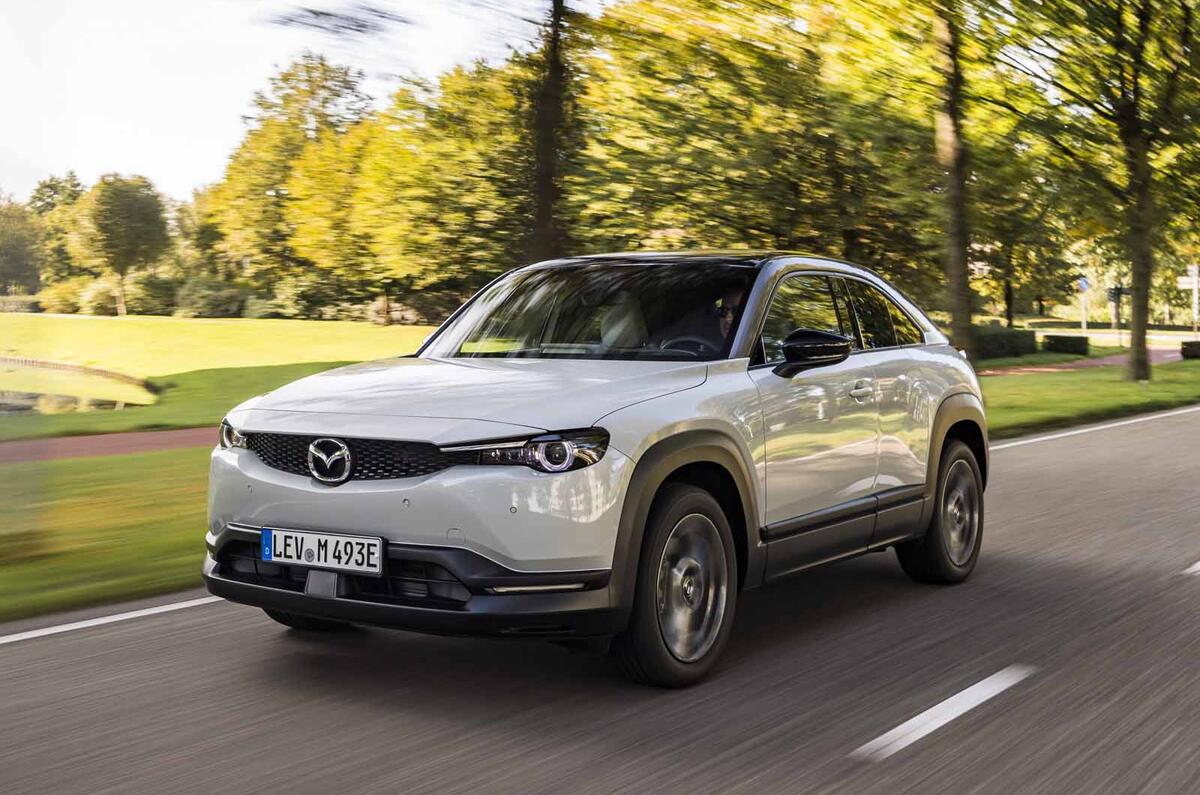
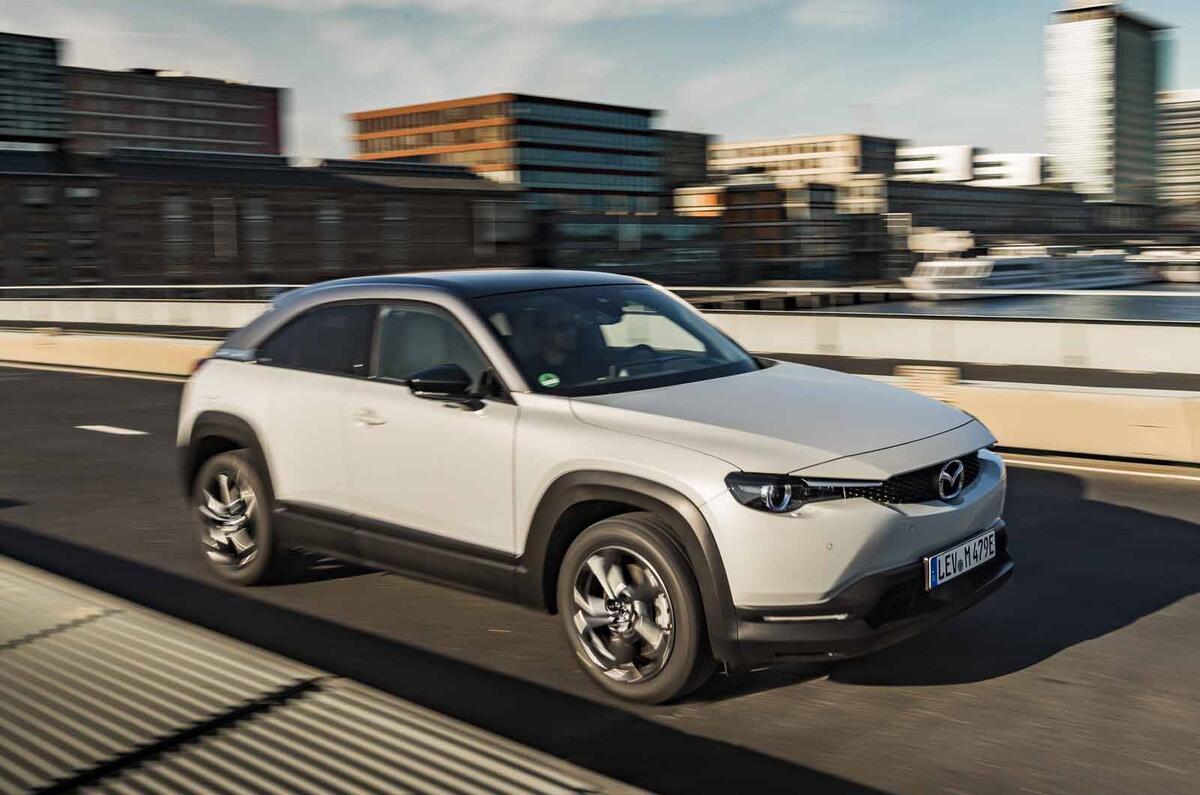

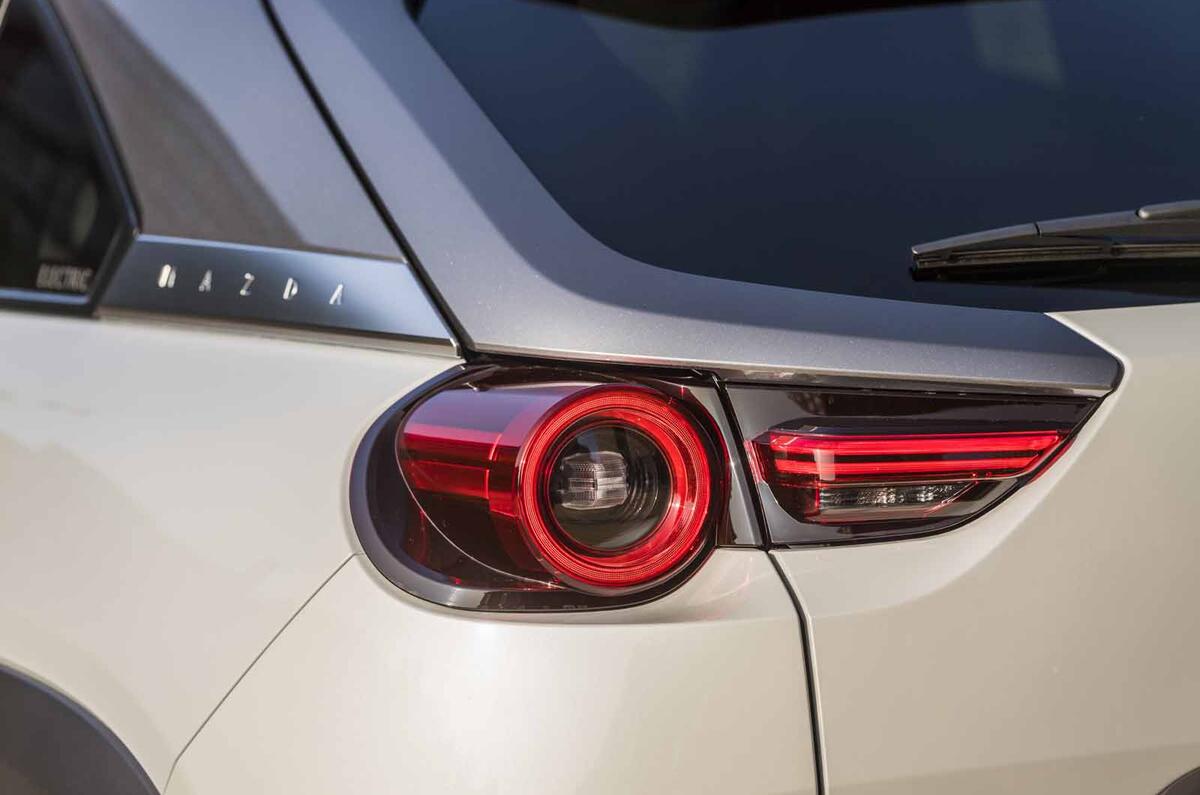
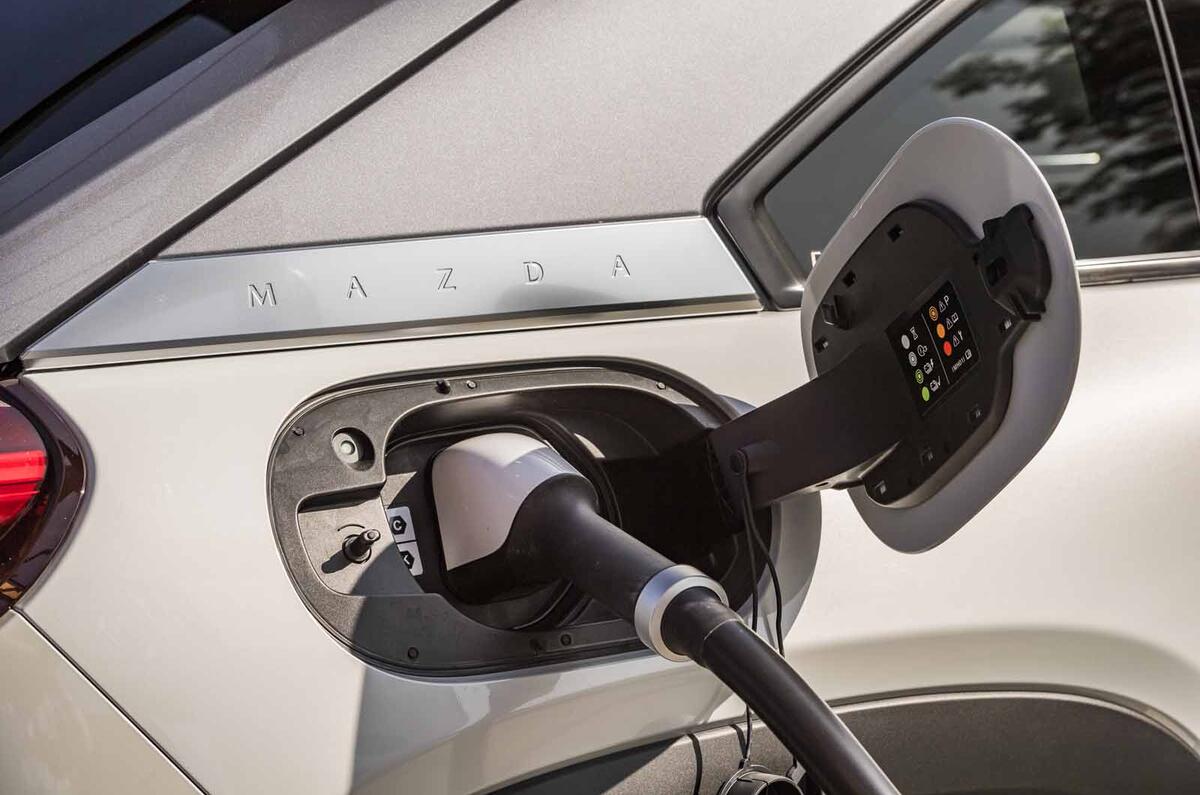
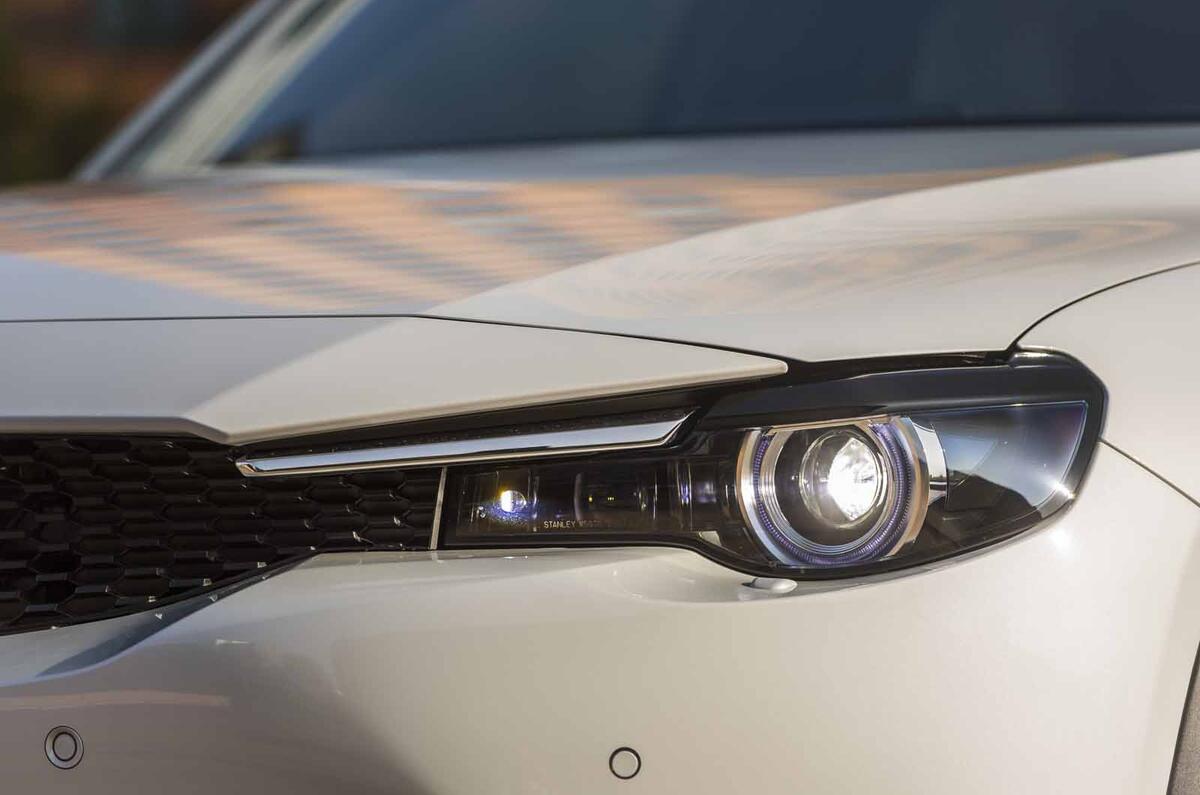



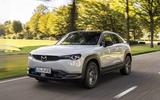
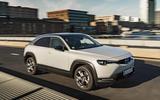
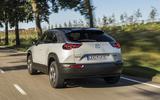
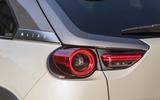







Join the debate
Add your comment
Not sure
Range is a letdown. It's short-sighted of manufacturers to quote stats about people's commutes, as if that's all they use their cars for. If you wanted to go on a day trip to a remote spot, you're pretty limited to 50 miles each way if it's somewhere that doesn't have a charger. As others have said, touch screen is a bizarre decision given Mazda's other recent efforts, and stylistically I can't see it winning many buyers.
Poor range for all that money
Pointless car.
And if people start quoting the stats of the opposition, they're all ridiculously expensive, compromised forms of transport too.
I'm seriously worried that by car manufacturers getting away with doing ridiculous things constantly for so long (e.g. launching disappointing and expensive EVs, or artificially hiking the price of ICE cars to ludicrous levels to close the gap) us consumers will just come to accept this appalling situation.
The bottom line for me is that if I'm going to have to experience range anxiety and the delights of stopping somewhere awful for ages for it to charge up that I'll have to pay a premium for (thus already negating one of the main reasons for buying an EV), I'm not prepared to spend ridiculous amounts of money on one (despite us tax-payers already paying £3500 towards these EVs anyway in our taxes).
gavsmit wrote:
Issues is if you have £27,000 you can probably find £38,000 for a no compromises Tesla Model 3.
One of the upsides of 200 miles plus of range is that if you forget to plug it in there is no issues.
Interestingly enough one of the issues with smaller batteries is that they end up being more heavily discharged for equivalent millage and as such last a much shorter period of time thus making a mockery of their CO2 in manufacture argument for smaller batteries (which is bollox anyway as you can make a battery pack using clean energy).
Touchscreen?
Surprised to see the touchscreen for climate controls in this Mazda. I remember reading that Mazda did a lot of research in designing the new 3 interior and concluded that touchscreens were a distraction hence the set-up in the 3. Totally ignoring that here?